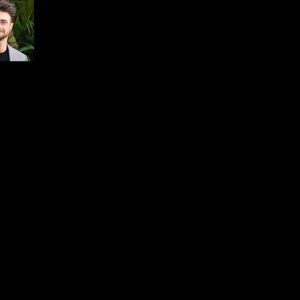The Soul of a Legend: How Gospel Shaped Aretha Franklin's Iconic Career
She wasn’t called the “Queen of Soul” for nothing. Aretha Franklin’s journey to superstardom wasn’t just marked by chart-topping hits and unforgettable vocals—it was powered by gospel, the deeply spiritual genre that shaped her voice, her identity, and her legacy. While most fans recognize her for epic anthems like "Respect" and "Think," true stans of this legendary diva know the real tea: Aretha's heart always belonged to gospel.
Let’s take a deep dive into how gospel music fueled Aretha Franklin’s rise to fame—and why even the glitz and glam of pop stardom couldn’t pull her away from her holy roots.
Church Girl, Global Icon
Born in Memphis and raised in Detroit, a city already throbbing with musical energy, Aretha Louise Franklin grew up surrounded by gospel greatness. Her father, Rev. C.L. Franklin, was a titan in the Black church and known for his electrifying sermons and civil rights activism. It was inside Detroit’s New Bethel Baptist Church where Aretha’s raw, soulful voice first took flight—at just 14 years old, she recorded her first album, “Songs of Faith.” It was spiritual, authentic, and powerful—laying the bedrock for everything to come.
Her gospel start wasn’t just a stepping stone—it was the blueprint for the powerhouse vocal style that would later make her a household name.
The Crossover Queen
In the early ‘60s, Aretha made the leap into secular music—but she didn’t leave her gospel flair behind. Instead, she brought the church with her. When she hit the mainstream with hits like “I Never Loved a Man (The Way I Love You)” and “Respect,” her gospel roots electrified her performances and gave her music that signature soul sound that no one—literally no one—could replicate.
Those high-drama crescendos, those unbelievable vocal runs, that raw emotional delivery? Straight out of the choir loft. Aretha didn’t just sing—she testified. And her audience? We were her congregation.
The Holy Ghost In Her Hits
You can hear gospel’s fingerprints all over Aretha’s biggest tracks. Songs like “Respect,” “Chain of Fools,” and “A Natural Woman” weren’t religious in the traditional sense, but the energy, power, and unapologetic soul in them came straight from church.
Her performances at big moments—like singing “My Country ‘Tis of Thee” at President Obama’s inauguration in 2009 or that unforgettable Kennedy Center Honors tribute in 2015—weren’t just technically brilliant. They were spiritual experiences, leaving viewers (and sometimes even presidents) in tears. Gospel wasn’t just in her past—it was in her everything.
Full-Circle Moment: ‘Amazing Grace’
Real ones know: Aretha’s 1972 gospel album, “Amazing Grace,” is one of the most iconic live gospel recordings of all time. Period. Filmed at the New Temple Missionary Baptist Church in Los Angeles, the two-night performance brought Aretha back to her gospel roots and reminded the world where her magic really came from.
“Amazing Grace” not only became her best-selling album—it’s also considered one of the greatest gospel albums ever made. And when the long-shelved documentary of the recording was finally released in 2018, fans old and new finally got to witness that once-in-a-lifetime performance on screen. The chills? Unreal. The vocals? Heaven-sent. The emotion? 100% authentic.
Aretha, Gospel, and the Culture
Let’s not forget—Aretha’s deep connection to gospel wasn’t just musical. It connected her to her community, to the Civil Rights Movement, and to generations of Black artists inspired by her fearless expression of faith and feeling.
By staying true to gospel, Aretha didn’t just become a pop icon. She became a cultural and spiritual leader—using her voice to empower, inspire, and uplift, both from the pulpit and the stage.
Legacy That Lives On
Even after her passing in 2018, Aretha’s influence continues to vibe high. From Jennifer Hudson’s powerhouse portrayal in the 2021 biopic “Respect” to countless tributes at award shows, festivals, and TV specials—artists across genres still draw from the well of soul and spirit that Aretha helped define.
And let’s keep it real: No one is topping that blend of gospel fire and soul flavor that only the Queen could serve. Gospel didn’t just impact Aretha Franklin’s career—it was her career’s soul.
So the next time you hear those opening notes of "Respect" or get chills during a Sunday playlist, remember this: The Queen came from church—and she took us all to church, every time she sang.
Long live the Queen of Soul—and the gospel truth that made her reign.
SEO Tags: Aretha Franklin gospel influence, Amazing Grace album Aretha, how gospel shaped Aretha Franklin, Aretha Franklin church roots, Aretha Franklin career highlights, iconic women in gospel music, Aretha Franklin musical legacy, gospel music in soul, Aretha Franklin documentary

